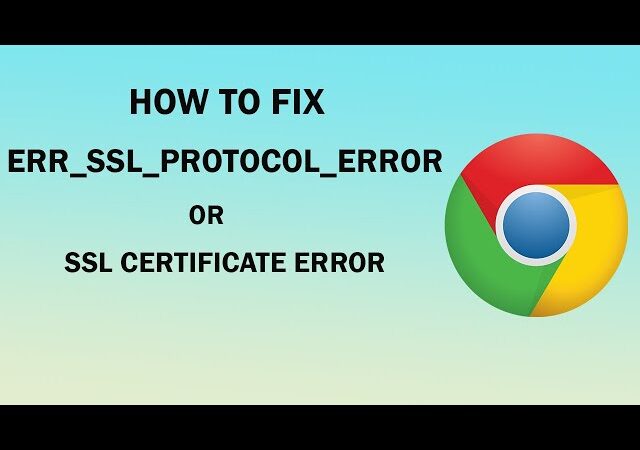
Read Quick Answer
The error “[www.xnxx.com sent an invalid response. ERR_SSL_PROTOCOL_ERROR]” is often found when an SSL certificate link from a website is not built, expired, or not supported by the browser or the device in use. There, secure communication between the server and the user gets interrupted due to reasons really not limited to outmoded software, invalid certificates, or incorrect system configurations.
What Is www.xnxx.com sent an invalid response. ERR_SSL_PROTOCOL_ERROR”?
Simply: this error occurs because your browser cannot establish a secure connection to a website. This usually means an invalid SSL certificate; SSL is that technology which ensures that your data remains private while you are spinning across the web. It may look potentially threatening, as it isnt, since that’s how the browser protects you from possible security issues.
Main Causes
Understanding the reasons behind this error is the first step. More specifically, here are the most common causes of the problem:
1. SSL Certificate Problems
- Expired Certificates: Every website should update its SSL certificate regularly. After a certain period, failure to do that will mean the browser will not approve the connection.
- Incorrect SSL configuration: In some situations, the SSL configuration of the website is done improperly, which raises this error.
2. Browser and Cache Issues
- Browsers store cache and cookies to make your experience smoother. But outdated or corrupted data can cause SSL errors.
- An old browser version might also lack support for newer SSL protocols.
3. Security Software Interference
- Overly strict antivirus or firewall settings can block SSL connections, causing the error to appear.
4. Incorrect System Time and Date
- SSL certificates rely on your device’s date and time for validation. If your system clock is off, the error may occur.
5. Network and Proxy Settings
- Misconfigured proxies or VPNs can also interfere with the browser’s ability to check for SSL certificates.
Step-by-Step Solutions
Now, let’s move on to how you can fix this problem:
1. Check the SSL Certificate of the Website
- Check the SSL certificate status of the site using any online tool like SSL Checker that tells you if the SSL certificate of the website is valid and properly configured.
- If you are the owner of the website, verify installation and renew your certificate if needed.
2. Update Your Browser
- An outdated browser might struggle to handle newer SSL protocols.
- Update your browser to the latest version through its settings.
3. Clear Cache and Cookies
- Old data stored in your browser can interfere with SSL validation. Clear your cache and cookies by:
- Opening browser settings.
- Selecting “Privacy and Security.”
- Clicking “Clear browsing data.”
4. Adjust Security Software
- Temporarily disable your antivirus or firewall to see if they’re blocking SSL connections.
- Add an exception in your software to allow SSL traffic for trusted sites.
5. Check Your System Time and Date
- Incorrect system time is a common cause of SSL errors. Synchronize your clock with internet time servers via your device settings.
6. Reconfigure Network Settings
- Disable unnecessary proxy settings or VPN configurations that might interfere with SSL.
Preventive Care for Avoiding SSL Errors
Fixing the problem is a commendable action; however, preventing it from occurring would even be better. Here’s how to avoid SSL errors forever:
1. Regular SSL Maintenance
- Before Add Expiration, Renew your SSL certificates.
- Use certificates provided by those Certificate Authorities (CAs) that are considered trustworthy.
2. Keep Software Updated
- Always keep your browsers, operating system, and security software up to date.
3. Educate Users
- If you manage a website, inform users about how to access your site securely and troubleshoot basic SSL issues.
4. Configure Firewalls and Security Software
- Adjust your security settings to avoid unnecessary SSL blocks without compromising protection.
FAQs
Why do some websites show this error and some not?
The reason is, SSL certificate of the site and the capacity of the browser to validate it.
Can I ignore this error?
Ignoring it isn’t safe—it indicates a potential security risk.
How to verify if an SSL certificate is valid?
You can either check SSL Checker or view its details directly in your browser.
Will updating my browser fix this issue?
In many cases, yes! An updated browser can handle modern SSL protocols.
What should I do if disabling my firewall resolves the error?
Adjust your firewall settings to allow SSL traffic instead of keeping it disabled.
Conclusion
The “[www.xnxx.com sent an invalid response. ERR_SSL_PROTOCOL_ERROR]” error can seem technical, but with a little patience and these actionable steps, you can resolve it quickly. Always prioritize secure connections by keeping your systems updated and checking SSL configurations. This way, you can browse with confidence knowing your data is protected.


